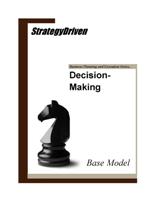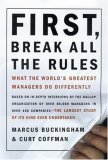Recommended Resource – The Three Signs of a Miserable Job
The Three Signs of a Miserable Job: A Fable for Managers (And Their Employees)
by Patrick M. Lencioni
About the Reference
The Three Signs of a Miserable Job: A Fable for Managers (And Their Employees) by Patrick M. Lencioni examines three causes of job dissatisfaction. Focused on the executive and management teams, Mr. Lencioni illustrates the harmful effects of anonymity, irrelevance, and immeasurability on worker performance and ultimately the organization’s success. He then prescribes actions that can be taken to overcome these obstacles thereby increasing employee productivity and engagement which subsequently improves organizational performance.
Benefits of Using this Reference
Employee performance serves as the foundation for the organization’s overall performance. When employee efforts are optimized and aligned to common mission goals, the organization realizes its greatest value potential.
Creating job satisfaction and thereby earning employee engagement and promoting focused, productive work effort is the responsibility of every executive and manager. StrategyDriven contributors like The Three Signs of a Miserable Job because it highlights the fundamental job satisfaction needs shared by all employees and the barriers preventing these needs from being met. As with all of his previous fables, Mr. Lencioni offers actionable steps executives and managers can take in order to eliminate these barriers. Additionally, Mr. Lencioni’s recommended actions support what StrategyDriven contributors believe is key to sustained, superior success; shared vision, focus, and commitment.
As a business novel, The Three Signs of a Miserable Job presents its principles for improving job satisfaction through a believable, vividly illustrated, and easily related to story of two organizations struggling to improve performance. Many of the best practice recommendations found on the StrategyDriven website compliment the actions prescribed in The Three Signs of a Miserable Job
; making this book a StrategyDriven recommended read.


 StrategyDriven contributors are pleased to announce the release of our fourth model, the
StrategyDriven contributors are pleased to announce the release of our fourth model, the  All organizations face the dilemma of limited resources. Some organizations, through the use of deliberate work prioritization and sound resource needs estimation, ensure their resources are appropriately allocated to maximize the organization’s overall value. In other organizations, however, there exists an adversarial relationship between seniors and subordinates that results in inaccurate resource estimation and subsequently diminishes the overall value the organization is capable of producing.
All organizations face the dilemma of limited resources. Some organizations, through the use of deliberate work prioritization and sound resource needs estimation, ensure their resources are appropriately allocated to maximize the organization’s overall value. In other organizations, however, there exists an adversarial relationship between seniors and subordinates that results in inaccurate resource estimation and subsequently diminishes the overall value the organization is capable of producing.
